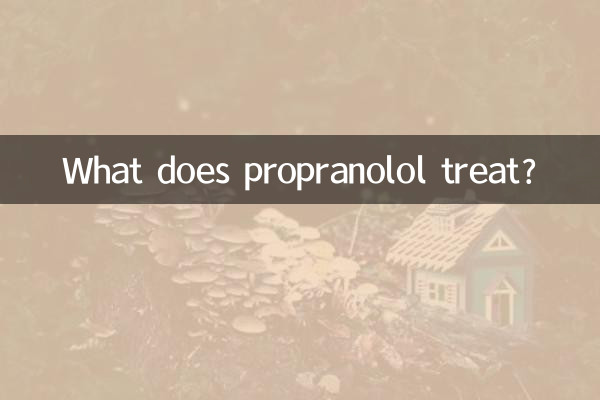What does propranolol treat? ——Analysis of hot topics and hot content across the entire network
Recently, discussions about the drug "propranolol" have continued to be hot on major social platforms and medical forums. This article will combine the hot topics and hot content on the Internet in the past 10 days to provide you with a detailed analysis of the uses, mechanism of action and related precautions of propranolol.
1. Basic information about propranolol

| Drug name | common name | Pharmacological classification |
|---|---|---|
| propranolol | propranolol | beta blockers |
Propranolol (propranolol) is a classic beta-blocker mainly used to treat cardiovascular diseases and some neurological diseases.
2. Main therapeutic uses of propranolol
| therapeutic area | Specific indications | Mechanism of action |
|---|---|---|
| cardiovascular disease | Hypertension, angina, arrhythmia | Block beta receptors and reduce heart rate, blood pressure and myocardial oxygen consumption |
| neurological disease | Migraine prevention, essential tremor | Regulate vascular tone and inhibit sympathetic nerve over-excitability |
| Other uses | Hyperthyroidism symptom control, auxiliary treatment for anxiety disorders | Inhibits the effects of catecholamines |
3. Hot topics of discussion across the entire network
1.New uses for propranolol in treating anxiety disorders: Recently, many medical bloggers have shared the unique effects of propranolol in relieving social anxiety and performance anxiety.
2.Medication precautions and controversy: There has been widespread discussion about the "rebound phenomenon" that may be caused by sudden discontinuation of medication, and experts suggest that the dosage must be gradually reduced according to medical advice.
3.Interactions with other drugs: Netizens are hotly discussing the incompatibility of propranolol with antidiabetic drugs, bronchodilators and other drugs.
| Controversial topics | support point of view | Opposing views |
|---|---|---|
| Long-term safety | Decades of clinical application have proven its safety | May increase risk of depression |
| Athletes use issues | Can control game tension | May be considered a stimulant |
4. Clinical Use Suggestions
1.Dosage adjustment: Needs to be gradually adjusted according to individual response, generally starting with a low dose.
2.Taboo groups: It is contraindicated in patients with asthma, severe bradycardia, and cardiogenic shock.
3.Adverse reaction monitoring: Common adverse reactions include fatigue, dizziness, gastrointestinal discomfort, etc.
| adverse reactions | incidence | Handling suggestions |
|---|---|---|
| Weakness | Common (>10%) | Adjust the dose or take it in divided doses |
| dizziness | common | avoid getting up suddenly |
| Gastrointestinal discomfort | Less common (1-10%) | Take after meal |
5. Future research directions
Recent research focuses on the application of propranolol in the treatment of tumors (especially hemangioma) and its potential therapeutic effect on post-traumatic stress disorder (PTSD).
Conclusion:
Propranolol is a classic drug whose therapeutic scope is constantly expanding. However, whether it is a traditional use or a new indication, it should be used under the guidance of a professional physician. This article summarizes recent hot discussions and authoritative information about propranolol across the Internet, hoping to help readers have a more comprehensive understanding of this drug.

check the details

check the details